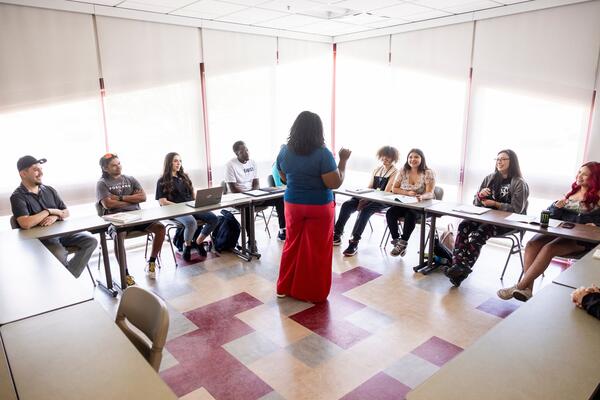
Bachelor’s Degrees Unaffordable for Most Low-Income Students
The high cost associated with college is one of the greatest deterrents for students interested in higher education. A 2024 survey by Inside Higher Ed and Generation Lab found that 68 percent of students believe higher ed institutions charge too much for an undergraduate degree, and an additional 41 percent believe their institution has a sticker price that’s too high.
A recent study by the National College Attainment Network found that a majority of two- and four-year colleges cost more than the average student can pay, sometimes by as much as $8,000 a year. The report advocates for additional state and federal financial aid to close affordability gaps and ensure opportunities for low- and middle-income students to engage in higher education.
Methodology: NCAN’s formula for affordability compares total cost of attendance (tuition, fees, housing, etc.) plus an emergency reserve of $300 against any aid a student receives. This includes grants, federal loans and work-study dollars, as well as expected family contribution and the summer wages a student could earn in a full-time, minimum-wage job in their state. Housing costs vary depending on the student’s enrollment: Bachelor’s-granting institutions include on-campus housing costs, and community colleges include off-campus housing rates.

National College Attainment Network
Costs that outweigh expected aid and income are classified as an “affordability gap” for students.
A recent Inside Higher Ed and Generation Lab survey of 5,065 undergraduates found that 9 percent of respondents said an unexpected expense of $300 or less would threaten their ability to remain enrolled in college.
The total sample size covered 1,137 public institutions, 600 of which were community colleges.
Majority of colleges unaffordable: Using these metrics, 48 percent of community colleges and 35 percent of bachelor’s-granting institutions were affordable during the 2022–23 academic year. In total, NCAN rated 473 institutions as affordable.
Comparative data from 2015–16 finds slightly more community colleges were affordable then (50 percent) than in 2022–23 (48 percent), but that the average affordability gap, or total unmet need, has grown from $246 to $486.
Among four-year colleges, more public institutions were affordable in 2022–23 than in 2015–16 (29 percent) and the average affordability gap shrank slightly, from $1,656 to $1,554. The data indicates slight improvement in affordability metrics but highlights challenges for low-income students interested in a bachelor’s degree, according to the report.
NCAN researchers believe the $400 increase in the maximum Pell Grant in 2023 helped lower costs per student at bachelor’s-granting institutions, but community colleges appear less affordable due to the loss of HEERF funding and the increase in cost of attendance due to rising housing costs.
Affordability ranges by states: Access to affordable institutions is also more of a challenge for students in some regions than in others. NCAN’s analysis found that 14 states lacked a single institution with an affordable bachelor’s degree program for low-income students. In 27 states, 65 percent of public four-year colleges were unaffordable.
For two-year programs, five states lacked an affordable community college. Some states had a small sample (fewer than five) of community colleges analyzed; Delaware and Florida had no community colleges in NCAN’s sample.
In Kentucky, Maine and New Mexico, 100 percent of the two-year colleges analyzed were found to be affordable for students, along with at least 80 percent of the bachelor’s degree–granting institutions in those states.
Students pursuing a bachelor’s degree in New Hampshire ($8,239), Pennsylvania ($8,076) and Ohio ($5,138) had the largest affordability gaps. For community colleges, students in New Hampshire ($11,499), Utah ($7,689) and Pennsylvania ($4,508) had the greatest unmet need.
Conversely, some states had aid surpluses, which can help address other expenses associated with college, including textbooks and transportation.
Cost isn’t the only barrier to access, however. “For many students who live in rural or remote areas, far from the postsecondary institutions in their state, college may remain inaccessible,” the report noted.
Based on the data, NCAN supports additional funding for higher education at all levels, federal, state and local, to provide students with financial aid.
Get more content like this directly to your inbox. Subscribe here.
Source link



